2021 – 2025
FOREWORD
This Cultural Strategy is our commitment to ensuring Westminster remains a vibrant, welcoming and inclusive cultural hub. It is a continued invitation to you – our residents, businesses, voluntary and arts partners to work with us to create meaningful experiences and the right conditions for innovation to flourish.
Last year we invited you to help us establish our strategic priorities, and to continue to work with us over the next five years to make sure that our initiatives support everyone who works and lives within our community.
The COVID-19 pandemic has reinforced the need for cultural engagement. It has shown us how in difficult times our common humanity and its creative expression through the arts can be a vital source of inspiration, resilience and healing.
The council is, now, more than ever, committed to doing all we can to enable Westminster’s worldclass cultural and creative sector to prosper; from our placemaking initiatives – creating new and exciting public spaces – to animating the city through outdoor events, festivals and markets.
The creative potential of our young people is being nurtured by our Children’s Services and City Lions officers through a range of school partnerships, industry events and cultural enrichment activities. We already offer a range of arts and wellbeing initiatives, but our new Strategy looks at whether we can do more with others on this front.
Our Council Economy and Placemaking teams are exploring new ways to invigorate our high streets with pop-up, artist-led activities and we are bringing together a range of people and partners to launch a cultural campaign to bring arts events out on to the streets of Westminster later this year.
Initiatives are also underway with Landowners, BIDs and sector bodies to attract new business investment and foreground Westminster’s role as a centre for innovation and world-class creative industries.
Our vision is of a city that welcomes visitors and residents to experience our extraordinary cultural heritage alongside contemporary creative innovation and enterprise. With your help we will continue to work together to provide wider access to culture, greater wellbeing through arts participation, thriving creative businesses, new jobs and many more creative places and spaces.
Collectively we can maximise the cultural offer across our city as we build a better future and a City for All.
Councillor Paul Swaddle OBE, Cabinet Member for Finance and Smart City

OUR COMMITMENT TO CULTURE
We want to celebrate and promote culture, its creative expression through the arts, and its benefits across our city
It is abundantly clear, as we continue to update the council’s City for All vision in response to the pandemic, how vital the revival of cultural engagement in Westminster is to the recovery of our city and the creation of vibrant communities.
This new Cultural Strategy is our call to residents, businesses, voluntary sector and arts partners to collaborate with us, so that all our residents, workers and visitors feel safe and welcome to enjoy culture in our streets, iconic venues and community spaces. Working with libraries, community champions and housing services we want to ensure we reach all, especially the city’s most deprived communities, in which the economic, social and health impact of the COVID-19 crisis can be most deeply felt.
Our understanding of culture is that it permeates all aspects of our lives and is part of the way we express ourselves individually, as businesses and as communities. While its expression through the arts includes large-scale events, museums and galleries, public artwork and architecture, festivals and film sets, all of which make Westminster an international destination and important host of world leading creative sectors, it also includes community festivals, faith gatherings, markets, informal activities, digital engagement, charities and the libraries where many of our youngest residents will engage with the arts for the first time. Our vibrant creative businesses,
including the film, visual effects, advertising, fashion, marketing, design, and video games industries, host a significant and growing number of jobs both within Westminster and through their supply chains and associated investment in the city.
Our Four Cultural Strategy Priorities
We are keen to work with our community stakeholders to help deliver the four Strategy priorities.
/ Culture for All: It is our priority to increase access to culture for all, with a specific focus on reaching residents that encounter physical, social and economic barriers.
/ Resilient Communities: We aim to support health and wellbeing programmes, deepening relationships between the council’s Families, Public Health, Adult Social Care, and Libraries services, and cultural partners and health providers.
/ Open for Business: To nurture the creative economy we will attract new business and investment by increasing opportunities to engage in creative enterprise and the local cultural offer.
/ Creative Placemaking: We will ensure creative placemaking, so that cultural infrastructure, creative workspaces and resident programmes are integral to planning and regeneration schemes.
London is one of the most visited places in the world.
Hosting a record breaking 31 MILLION
visitors in 2016, Westminster is at the heart of this
18 per cent of the city’s residents come from the EU and 180 nationalities are represented
There are more than 130 MAJOR ESTABLISHMENTS
including eight historical buildings, 56 theatres, five concert halls, three other music venues, 13 comedy clubs, 15 cinemas, 24 museums and 16 art galleries
of all London’s jobs in music, performing and visual arts are based in Westminster 27%
Westminster is home to
SIX OF THE UK’S MOST VISITED
free cultural destinations
The borough is home to Soho, one of the world’s most influential media clusters. More than 1 IN 5 JOBS in London’s creative economy are in Soho
WHY CULTURE MATTERS
Culture shapes our sense of identity and affects our life chances
Experiencing and taking part in cultural activity can change the way we think about the world and about ourselves. Evidence tells us that engaging in cultural activities is good for our wellbeing, and can help us to discover new interests, strengths and careers. Our own creative expression, and the expression of others, through the arts help us reflect on social issues, from health inequalities to climate change and the Black Lives Matter movement, so we can work towards a more positive vision of the future.
Creativity and Enterprise
According to the World Economic Forum, critical thinking, complex and creative problem-solving and creativity are the top three skills that will survive in the face of increasing automation. Access to cultural activity through a range of formal and informal settings will provide our residents with opportunities to develop these critical skills. Supporting enterprise and ingenuity that inspire new cultural production and technological innovation will be key to the recovery of Westminster’s unique creative economy.
Health and Wellbeing
The Department for Digital, Culture, Media & Sport (DCMS) Committee’s recent report Changing Lives: the social impact of participation in culture and sport, points out the beneficial social impact of cultural and sporting activities on communities. Such activities are shown to improve criminal justice, education and health outcomes, and yet are too often undervalued. We want to ensure that in Westminster we do not miss opportunities to allow the unique power of culture to change lives, transform cities and reduce crime.
Community and Talent
Our Strategy is driven by the ambition for people of all backgrounds to be able to access and shape the culture around them for the current and future wellbeing of the community. As in the Arts Council’s Let’s Create strategy, the aim is for the creativity of each of us to be valued and given the chance to flourish. Part of this is to provide creative spaces within the community, which is so crucial for the showcasing of the talent of this and of future generations, as highlighted by the Greater London Authority’s recent Cultural Infrastructure Plan.
FOR EVERY £1
of turnover that art and culture generates, 51p of gross value is added to the economy
Music therapy reduces agitation and need for medication IN 67% of people with dementia 67%
Student participation in structured arts activities can increase COGNITIVE ABILITY by 17 per cent and there are direct benefits to wider educational outcomes
Research into social prescribing has shown a 37% DROP in GP consultation rates and a 27 per cent reduction in hospital admissions
Culture is a major catalyst of the tourism economy, with cultural tourists spending £7.3 BILLION out of the £11.5bn total yearly tourist spend in London
Cultural participation can reduce social exclusion and increase community cohesion, and contribute to making communities feel safer and stronger
CULTURE AND OUR PARTNERS
We can only make a difference by working with others
Our Strategy provides a structure around which we can invite community and cultural partners to work with us to create a varied, inclusive and exciting cultural environment for our residents, business and visitors.
The Strategy’s five year action plan aims to promote health and wellbeing, reduce social isolation, increase a sense of community, attract visitors, support business recovery and develop our young people.
We want to encourage our partners across Westminster to extend their reach and connect with more local people. This can be done by contributing to these already established council programmes:
/ City Lions: Providing workplace opportunities, workshops, events and talks to support Westminster school-children aged 13 to 16 towards creative careers, citylions.org
/ City Save: Creating free and discounted cultural offers to Westminster residents, citysave.westminster.gov.uk
/ Enterprise Space Network: Inviting membership of Westminster’s workspace network and tailored business support, businesswestminster.com
/ Out and About: Arranging free and accessible community group visits as part of our Out and About programme for the over 65s, westminster. gov.uk/leisure-libraries-and-community/artsand-culture/cultural-events-older-people
/ City of Sculpture and Green Plaques: Shaping the public realm by inviting proposals for City of Sculpture, westminster.gov.uk/submit-cityof-sculpture-proposal and Green Plaques, westminster.gov.uk/green-plaques
In addition, we will continue to provide updates about new opportunities for young people programmes, cultural campaigns, festival participation, networking, training and council grant schemes through our Culture Network mailings. You can find out how to join the Culture Network on our website, westminster.gov.uk/arts-networking-and-training
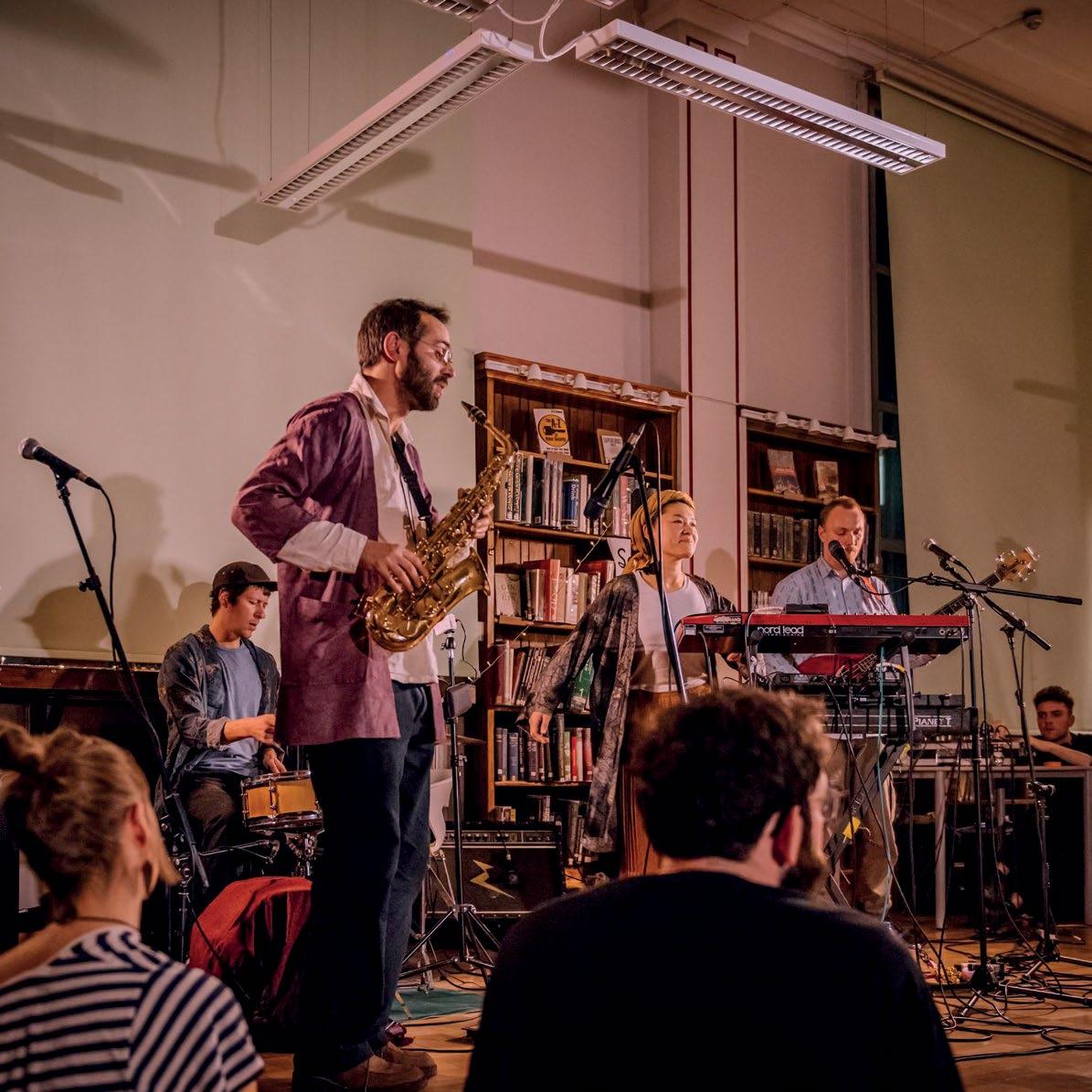
CULTURE FOR ALL //
Ensuring Westminster’s remarkable cultural offer is open to all residents, businesses and visitors
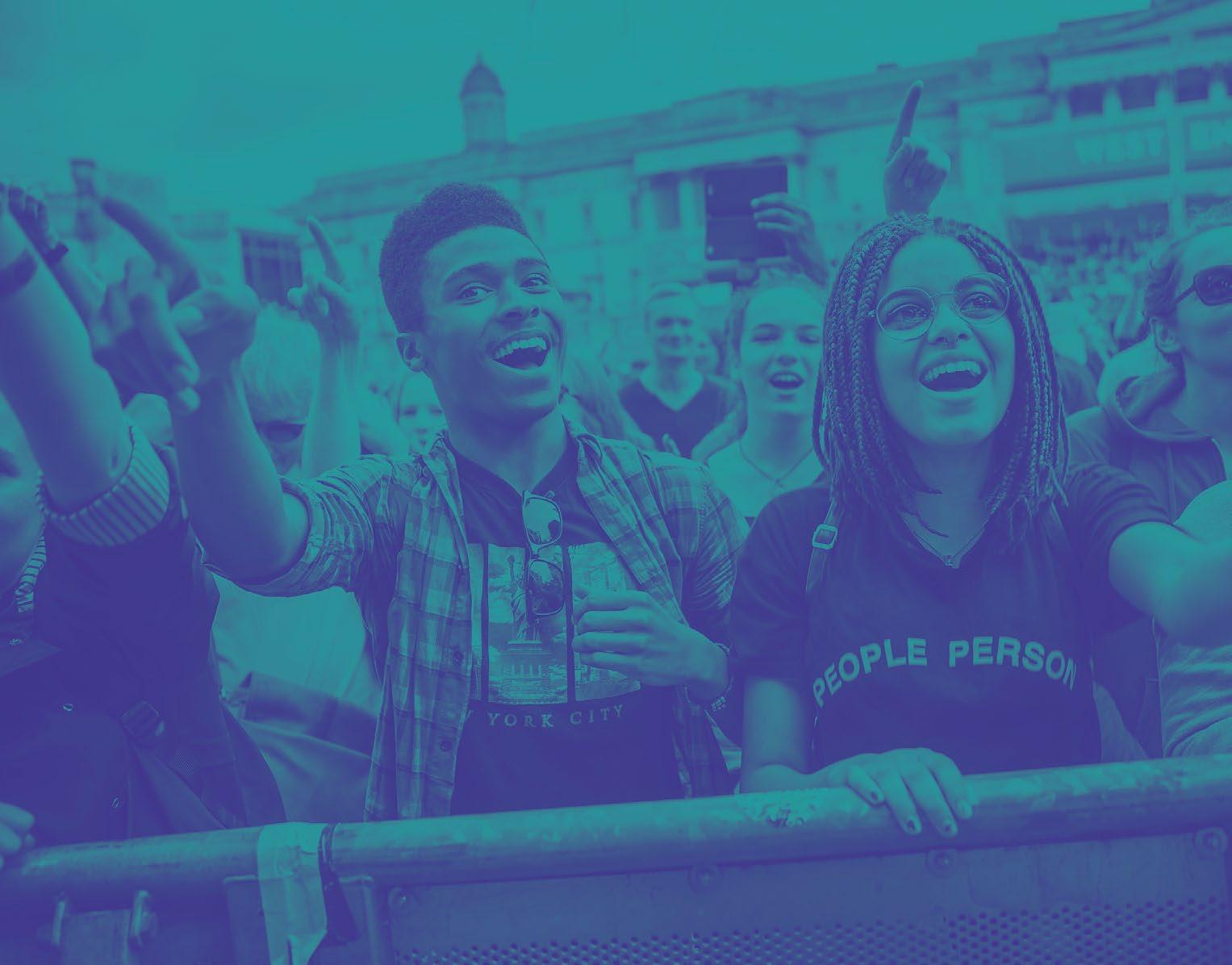
WHY IT’S IMPORTANT
Culture provides a vital tool for educating and building healthier and happier communities1
It helps connect people with their own communities, promoting civic participation behaviours, such as voting. Research shows a strong link, particularly for young people, between active participation in cultural programmes, and improving people’s sense of belonging and engagement in their local area2 . Exploring culture can also inspire reflection, debate and learning, and encourage people to think about social issues, such as climate change.
Data from DCMS indicate that certain groups are less likely to visit museums, arts and heritage venues, or engage in arts and heritage activities. Older people, those in lower socio-economic groups, and those who are unemployed, living in social housing, from a BAME background or living with a disability or longterm health condition all have lower levels of participation3 . Westminster is home to some of the country’s most deprived neighbourhoods and has comparatively high numbers of individuals who are less likely to engage with culture. We wish to
change this, and already have in place several initiatives that aim to make culture accessible to residents. For instance, our Music Hub provides music education and performance opportunities for Westminster school children, and our City Save scheme offers free or reduced-price access to cultural venues and activities.
We want to ensure that everyone in the city has the opportunity and ability to access Westminster’s rich cultural offer, and to ensure that everyone, from every background, is aware of the variety of cultural activities in the city. It is equally important that our world-class cultural sectors seek to create an inclusive offer, relevant to people’s lives.
Since 2007, the Westminster Faith Exchange, which is a long-standing initiative to facilitate and encourage dialogue between the council and the different faith communities, have run an art and poetry competition for children in the borough. The competition is open to children and young people of all faiths and is always very popular.
Our libraries, as freely accessible spaces, do and will continue to play a key role in ensuring our cultural offers are available to all. For example, during the COVID-19 lockdown our libraries continued to provide a home library service to vulnerable residents and offered public access to PCs, with the libraries’ internet used over 2,000 times a week.
To persuade both parents and young people of the value of culture we are planning three library exhibitions across the borough. These will display works made by local children and young people which chart their creative response to the lockdown. We also aim to show this work at the Saatchi Gallery and Piccadilly Lights. The works of these young artists will afterwards be held at our Archives Centre, where they will become part of historical records.
Our Cultural Strategy sets out our aim to take a more dynamic approach to engaging local young people with the arts and creativity, to ensure they are given a platform and a voice. We would like to work further with our family hubs, youth hubs, schools, colleges and universities to increase connections with both our iconic and grass-roots cultural organisations. To improve access and reach we will encourage outreach activities in our schools, such as the Donmar Warehouse’s planned 2021 tour of its Teenage Dick production to five schools across Westminster.
There is more to do to engage people culturally though the rapidly evolving digital sphere, which is itself changing the way we see and shape our culture. Through working more closely with cultural partners we can do more to connect them with our local communities.
The third MyWestminster Day quadrupled in attendance from its first to third year with over 4,000 PEOPLE attending in 2019
KEY PRINCIPLES
Increase cultural benefits for people living in the areas of most deprivation across Westminster, including our five most deprived wards: Westbourne, Queen’s Park, Harrow Road, Church Street and Churchill.
Support communities in delivering diverse cultural activities and events in libraries, faith venues and other community spaces.
Engage young people and parents with creativity and culture, through schools, libraries, family hubs, youth hubs and online platforms.
Increase awareness of Westminster’s rich and diverse arts offer through cross-promotion, resident newsletters and campaigns.
Work with our iconic cultural institutions to create free and accessible offers, including digital events, festivals and community visits.
Better employment of digital technology to engage residents and visitors in culture.
from 50 different schools across Westminster, Kensington & Chelsea and Hammersmith & Fulham of MyWestminster Fund has been awarded to organisations or projects with cultural outcomes
Each week our Music Hub provides a music education for over 5,000 PUPILS
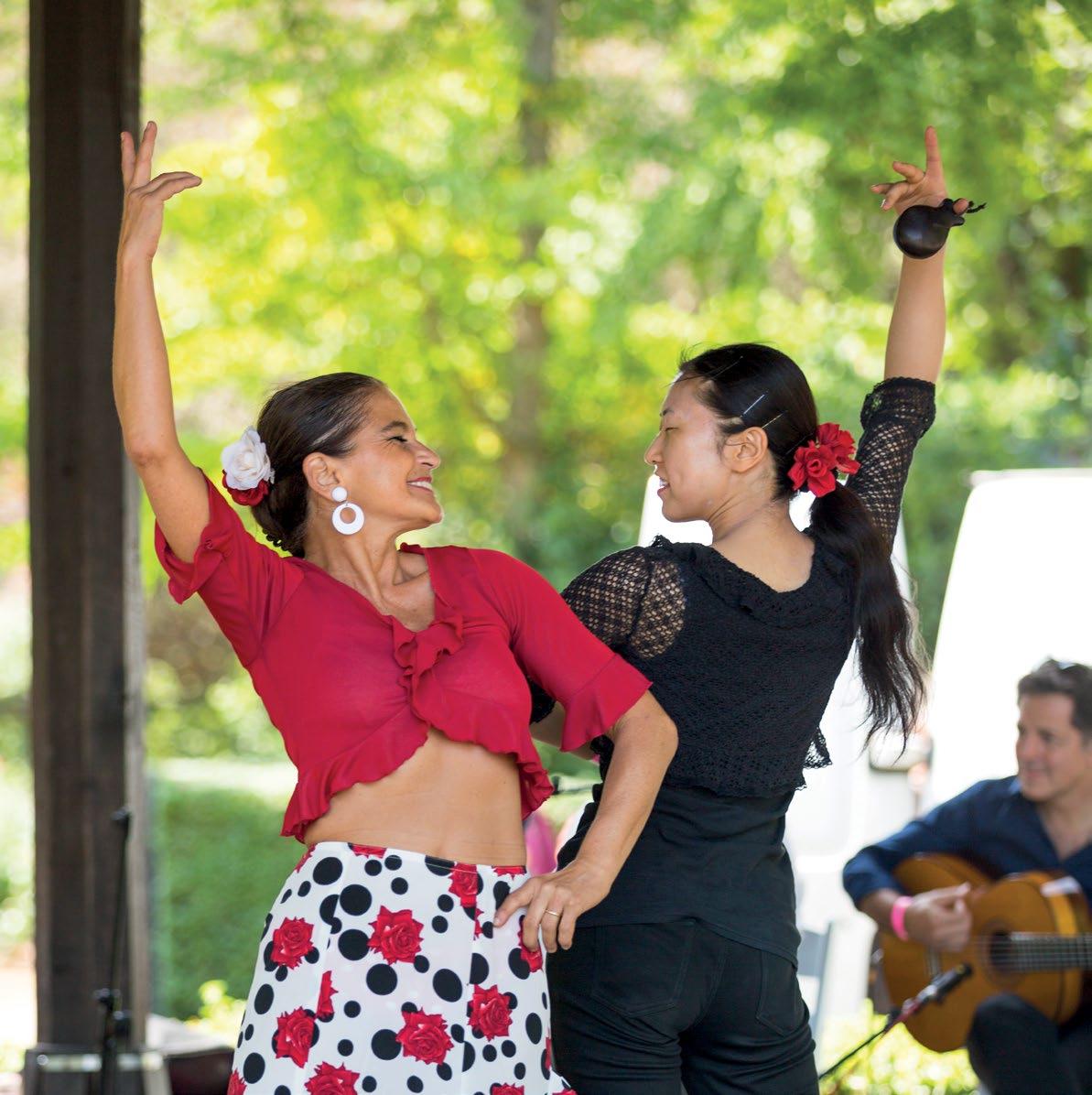
CASE STUDY //MYWESTMINSTER DAY
MyWestminster Day is a community festival hosted by the Leader of the Council at Paddington Recreation Ground. The free festival brings together residents from different backgrounds to promote a pride in our diverse and vibrant city. The first MyWestminster Day was in 2017 with 1,000 visitors. This has since grown to 4,500 visitors in 2019.
The event promotes a local and accessible form of culture for the city’s neighbourhoods and provides a great opportunity to involve residents, community groups and local businesses. It offers free live music, dance and food from across the world from local people and organisations. Community and voluntary groups deliver activities and workshops for all ages. These have included arts workshops, such as t-shirt painting with One Westminster volunteers, and henna painting with Westminster Bangladeshi Welfare Trust.
In 2019, 62% of people said they met someone new at the event and 98% said the event helped them to feel positive about their community. Lena ChoudarySalter, Director of Mosaic Community Trust, exhibitor at MyWestminster Day for the past three years, said: “The people who visited Mosaic’s marquees felt uplifted and proud to identify themselves as part of Westminster and its rich diversity of culture. The event gave us – the BAME groups – a unique opportunity to showcase our own positive contributions to MyWestminster’s ethos.”
RESILIENT COMMUNITIES
Using culture to help improve the health and wellbeing of residents and strengthen communities
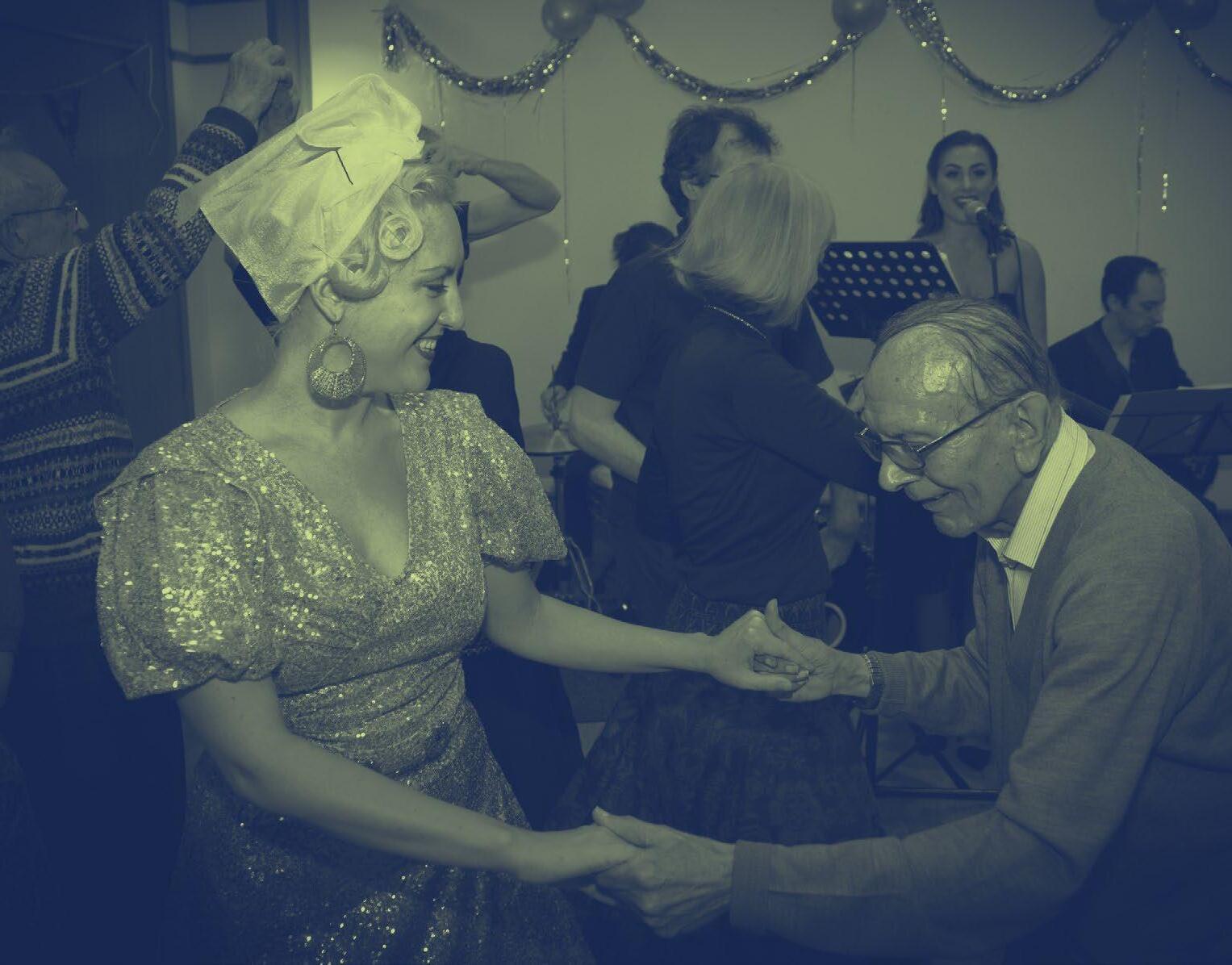
WHY IT’S IMPORTANT
Our society is faced with many challenges, including challenges to our individual wellbeing, such as poor mental health, loneliness and ageing
Evidence tells us that participating in culture – whether visiting a museum, going to the theatre or joining a class or activity – significantly increases overall life satisfaction4
A report by our Health and Wellbeing Centres task group found that using the city’s assets, including national and local arts organisations, improved the overall maintenance of good health, and contribute to building strong communities. Around 20% of GP visits are made for non-medical reasons5 , such as loneliness, and arts-based therapies have been shown to be effective in treating stress and mental health issues. In general, those who take part in arts and culture are more likely to report good health and increased life satisfaction.
Westminster has a higher than national average over 65 population, with a high or very high risk of loneliness for older residents. Isolation has serious health implications including depression, dementia, high blood pressure and cardiovascular
disease, as well as impacting quality of life and overall wellbeing6 . Using initiatives to reduce isolation such as social prescribing, in which activities such as visiting art galleries and museums are prescribed instead of medication, has been shown to reduce GP and hospital visits and save money.
There is increasing evidence that cultural activities both reduce risk of dementia and slow its decline. The council is committed to creating, supporting and encouraging accessible dementia-friendly environments. We promote the use of ‘low-stimulus’ performances, which can benefit those who are autistic and those living with dementia. We support arts-based and creative activities as part of the service offer in social care as an important part of the lives of our residents.
We are currently tackling loneliness in older residents through initiatives such as Out and About, which provides free tickets to cultural activities, such as concerts and theatre performances
to residents over 65. Other council-supported initiatives, such as Silver Sunday and the Tea Dance, offer opportunities for older people to try something new and meet new people, while visiting cultural venues such as the English National Ballet. Our libraries also attract people from a wide range of backgrounds and can play an important role in social prescribing and community referrals. They provide access to many cultural activities – from dance classes to jewellery making – which can have a positive impact on individual wellbeing and resilience, especially for those experience loneliness, isolation or poor health.
Although older people are at higher risk of isolation, 16 to 24 year-olds are the age group most likely to identify as feeling lonely, indicating where we may need to extend provision7. By targeting cultural activity at those most at risk, we can provide more positive health outcomes, while relieving pressure on other care services.
‘Westminster Sings’ has supported 10 COMMUNITY CHOIRS
providing mental health
support and
tackling social isolation
KEY PRINCIPLES
Recognise the social impact of culture and shape activities accordingly to help communities thrive.
Support programmes targeting those less likely to take part in culture, such as those living with dementia, those at risk of loneliness, and young people not in education, employment or training.
Employ council funds such as ward budgets, towards investment in local cultural activities and wellbeing.
Implement cultural projects shown to have a positive impact on crime and anti-social behaviour.
Every year
400 RESIDENTS
over the age of 65 enjoy free tickets to cultural events hosted by our partners across the borough
Engage local people in cultural activities to improve health and wellbeing by working with libraries and public health and leisure services.
Support cultural projects that promote active engagement in the community, such as volunteering.

CASE STUDY //DANCE WESTMINSTER
Dance Westminster is a new pan-disability event for people with disabilities aged 11 and over who live, study or work in the city. The project took place for the first time last winter, run by local inclusive dance company Step Change Studios and supported by the council. No experience of dance was required. Participants initially took part in one of three workshops followed by auditions to select ten finalists.
The first grand finale was held on 23 January 2020 at the Greenhouse Centre with an audience of 175 people and guest judges, including Wayne Sleep OBE.
Finalist, Shalim, said: “Dance Westminster was my first experience of dance... the whole process really felt like a lot of fun to me. I really want to use the process as an inspiration for other people with disabilities.”
The long-term goal is to set-up three annual disability dance programmes across the city, which would culminate in auditions and a grand finale.

CASE STUDY //LOOK AHEAD
During Spring 2019, the council facilitated a trial programme of cultural activities at a social service centre for some of Westminster’s most vulnerable people. Edward Alsop Court (EAC) is a 24 hour, 79 bed accommodation service managed by Look Ahead Care. It provides support for older homeless men who have complex needs.
To promote personal wellbeing and positive social experiences a 16 week programme of 72 activities was developed which offered art therapy, music, photography, creative writing, and cooking, as well as a range of sports activities, including fishing.
Peer Support Volunteers (PSV), who had personal experience of homelessness and drug and alcohol dependence, were selected to become Activity Coordinators. One PSV, who later moved from running the programme into full-time employment, said: “the mentality of the customers seems to have changed from a sentiment of ‘nothing ever happens around here!’ to a more positive, ‘things are happening, what can we do next?’.”
The activity programme resulted in a 98% fall in complaints at EAC compared to the 16 week period before the programme. Incidents of aggressive and anti-social behaviour fell by 54% and 49% respectively. Look Ahead is now seeking to roll out the programme more widely.
OPEN FOR BUSINESS
Supporting a thriving creative economy and opening up business and skills opportunities

WHY IT’S IMPORTANT
Promoting a thriving creative economy and creating opportunities for residents, visitors and businesses
The impact of COVID-19 on the performing arts, cultural institutions and creative sector and the consequent downturn has drawn sharp attention to the fragility of the local economic ecosystem and reinforced the need to focus on the creative industries as a central driver in the council’s recovery strategy and City for All delivery. Promoting and supporting the rich variety of cultural experiences on offer is key to ensuring a thriving mixed local economy postCOVID and welcoming visitors back to enjoy retail, hospitality and leisure opportunities. We will work collectively with Business Improvement Districts, landowners, Great Estates, London and Partners and sector bodies to retain our reputation as a dynamic global centre of excellence for cultural and creative industries.
Supporting the cultural sector provides many positive benefits to the city, from creating jobs to attracting visitors and enhancing Westminster as a place to do business. In 2019 there were over 100,000 creative and cultural jobs in Westminster, making up 15% of all jobs in the city. This proportion was three times higher than in London
as a whole8 across which cultural and creative sector jobs only make up about 5% of the total. Nationally the cultural sector was worth over £111 billion in 2018 in GVA terms and grew at five times the rate of the rest of the economy 9 ; Westminster is at the heart of this success story.
More than ever, in this time of uncertainty about the speed of the post-COVID recovery and our relationship with international markets, we are committed to creating an adaptable and attractive environment for creative industries to thrive in – building on our reputation as a world-class hub for commercial art galleries, fashion, creative media and performing arts production.
In recent years our City Promotions, Events and Filming team has supported large-scale events of international importance such as The London Film Festival in partnership with the BFI, London Fashion Week and West End LIVE. We work alongside BIDs and landowners to support cultural interventions in their respective areas including the Heart of London Business
Alliance’s ‘Scenes in the Square’, forthcoming ‘Art in London’ augmented reality project which is being delivered in partnership with National Gallery X and Grosvenor’s ‘WanderArt’ campaign.
We fund the development of affordable creative enterprise spaces and artist studios across the borough, including those at Somerset House. A new capital grants programme is about to launch, inviting cultural partners and creatives to take over void units and set up pop-up enterprises on our high streets. We are also shaping a new inward investment service for Westminster, building on the borough’s success to date in attracting high growth business and helping local businesses to scale. It will work closely with the BIDs to provide business support tailored to investors’ needs, ensuring connections to local supply chains and the wider Westminster ecosystem.
To help combat recession and to provide equal opportunities for our young people, we aim to foster new talent, paying particular attention to underrepresented groups, to help the cultural and creative sectors to bridge skills gaps. With a trend of fewer students taking arts and creative subjects in schools, we have a role to play in exposing young people to opportunities in the cultural sector and in recognising creativity as the skill most highly valued by employers, evidenced in recent CBI and LinkedIn surveys.
Creative education contributes in additional, indirect ways. Research has shown that participation in structured arts activities can increase cognitive ability by 17% and direct links have also been found with employment: students who study arts-based subjects are found to have a higher employability and be more likely to stay in employment than those who do not10. Given such links, the council's Business & Enterprise, City Lions and Children’s Services teams are keen to create more partnerships between schools and our cultural organisations.
Culture
its 11th year, now counting 500 MEMBERS representing cultural organisations, council services, and community groups
KEY PRINCIPLES
Support infrastructure, events and services to create an attractive operating environment for cultural and creative businesses and organisations.
Promote Westminster regionally, nationally and internationally as a cultural and creative destination which supports cultural investment.
Ensure culture is at the heart of our formal and informal economic activities, such as street entertainment and our city-wide markets strategy.
Broker affordable workspace and retail space opportunities to support existing creative businesses and attract new ones. Provide education and training for residents to develop the skills required in the cultural sector and so improve career opportunities and bridge the cultural skills gap.
Over 130,000 FT²
affordable workspace catalysed for creative businesses throughout Westminster
West End Live attracts over 100,000 people annually
Connect young people to cultural opportunities and meaningful work experience and ensure they have a voice in shaping cultural programmes.

CASE STUDY // WESTMINSTER ENTERPRISE SPACE NETWORK
The Westminster Business Unit provides support for local businesses, offering guidance and coaching on issues such as business support and consultancy, assistance with the apprenticeship levy, and an ongoing voucher programme to improve broadband connectivity.
The Business Unit launched the Westminster Enterprise Space Network in October 2019 as the council’s first network of workspace providers. Its aim is to bring together workspace providers to improve the provision of workspace within the community by offering affordable spaces offered at flexible tenures (1 to 12 months), ensuring business support within these workspaces to help small businesses to thrive, and providing business opportunities for local residents.
If workspace operators are already demonstrating these commitments, or are willing to undertake to do so, they can sign up to the network via an MoU (a memorandum of understanding) agreement.
The network is part of a light touch business support programme. It is free, is not legally or contractually binding, and currently has 29 members. Between them these members operate 60 enterprise spaces occupied by 1,500 businesses. The spaces include co-working space, serviced offices, art studios, makers’ spaces and catering space.
CASE STUDY //CITY LIONS
City Lions is a cultural programme for 13 to 16 yearolds which aims to connect young people with career opportunities within the creative sector through partnerships with creative organisations and schools.
City Lions has already successfully engaged over 1,500 young people in creative opportunities since 2018. Participants accessed work experience, and behind-the-scenes and workshop opportunities with Somerset House, Society of London Theatre, London Transport Museum, Wigmore Hall and the Exhibition Road Group, among others.
Creative employers are partnering with City Lions as part of their Corporate Social Responsibility programmes to address skills gaps, develop talent and engage with those from disadvantaged backgrounds.
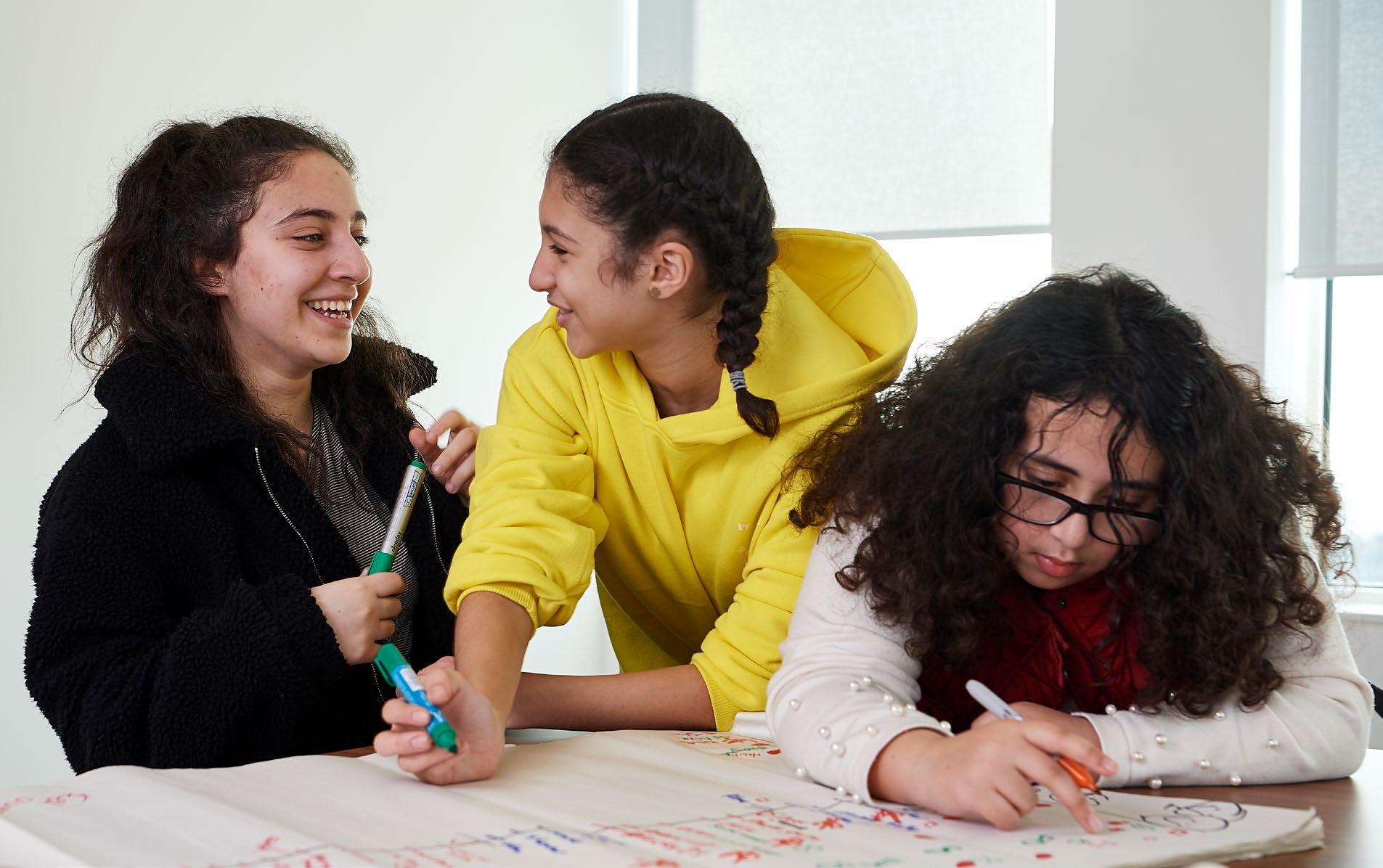
Many young residents in Westminster attended online workshops and virtual events in July 2020, as part of City Lions’ Digital Festival. Across five days, young people were able to gain exclusive access to a host of interesting and exciting creatives who delivered free workshops online via Zoom. The programme is now entering its third year of delivery in 2021 and will be expanding to include three strands to ensure all young people in Westminster can benefit from culture and creativity; City Lions Discovery, City Lions Community and City Lions Online. In addition to the programmes current activities, City Lions will be launching a new mentoring programme for young people looking to pursue a career in the creative industries, as well as free to use online resources and guidance to help them navigate their next steps.
CREATIVE PLACEMAKING
Making sure culture is embedded in public spaces, supporting residents to engage in and benefit from regeneration
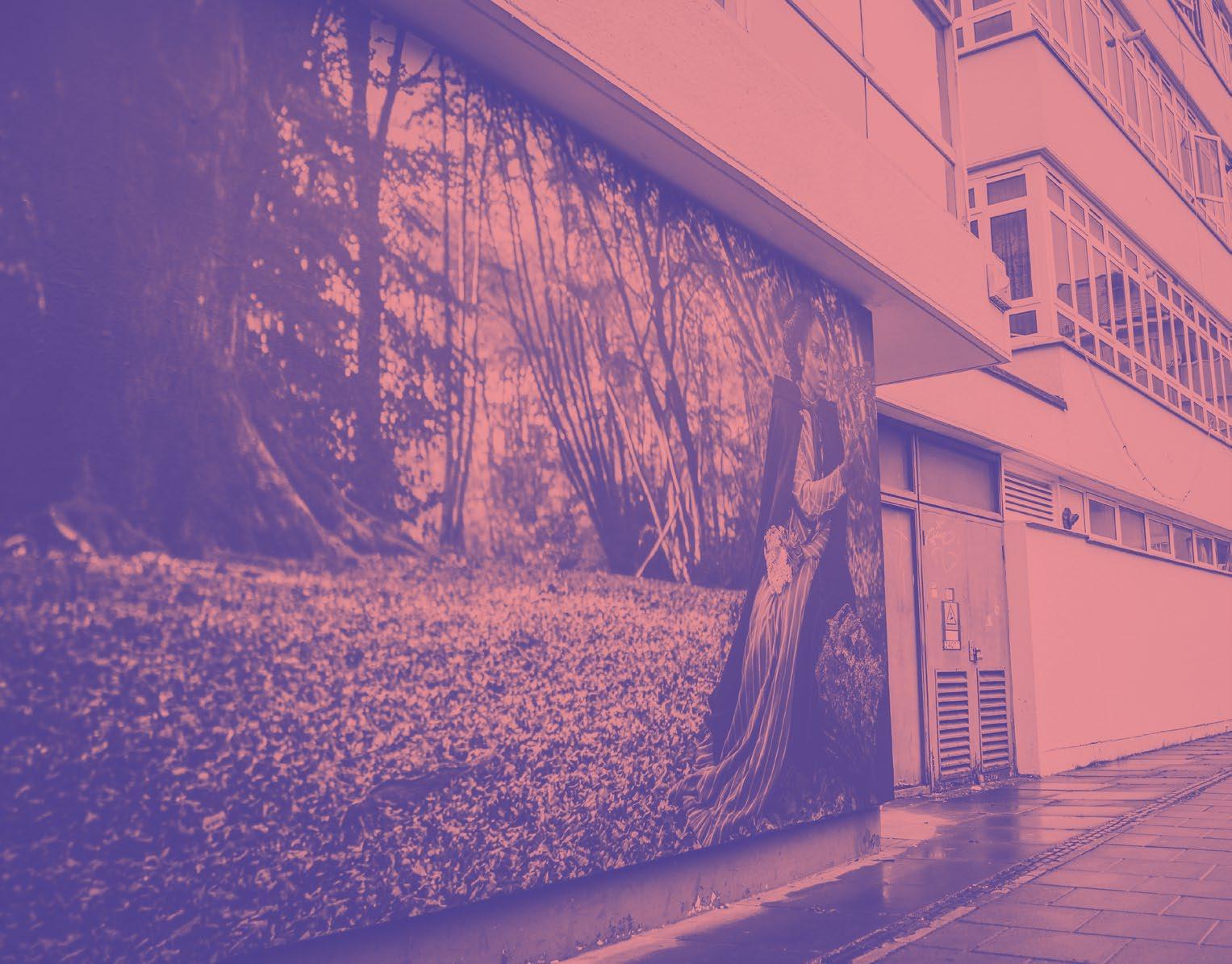
WHY IT’S IMPORTANT
We believe culture should be embedded in regeneration programmes, which should involve residents and businesses in the planning stages
Art and culture in public spaces is about enhancing the public space and making it more appealing, but also about encouraging the social cohesion and identity of a neighbourhood. Culture can provide a useful method of engaging communities, preserving local character and improving the benefits of regeneration. Already initiatives such as Green Plaques and City of Sculpture celebrate local cultural and heritage. We are committed to increasing local relevance and encouraging wider input from the community as these programmes develop, and we welcome the GLA’s review aimed at improving diversity in the public realm, so it can better reflect London’s multicultural communities.
A central plank of the council’s plan for economic recovery will be its emerging animation strategy, which will seek to create an inspiring and captivating local environment, with a transformative approach to the high street, creating a varied programme of cultural events and interventions
to attract audiences back into the city through a series of rewarding experiences. We will seek to combine subtle moments of surprise and delight alongside large-scale spectacles in partnership with local and international talent and creativity.
We want to better signpost the cultural value of our heritage sites which offer world-renowned landmarks and iconic picture-postcard architecture that attract tourists from around the globe. We want to help institutions evolve their offer, enliven outdoor spaces and reach new audiences. Emerge festival, run by Culture 24, will return in future years to transform our historical palaces and museums into night-time performance venues which invite exploration and play.
Our City Plan for the next 20 years aims to make the city more navigable through better wayfinding in public transport hubs, and by collaborating with organisations such as the London Walking Network to make it easier for people to visit cultural and heritage attractions by cycling and walking.
We have several emerging regeneration sites across the city in which culture is paramount. A new cultural quarter forms the heart of plans for Church Street, and innovative plans for the West End International Centre are underway, in collaboration with the Heart of London Business Alliance and other BIDs. A Creative Learning Quarter will evolve in StrandAldwych in a newly pedestrianised area linking Somerset House with King’s College and LSE.
Cultural activity will be incorporated into the Harrow Road and Ebury Bridge areas in new creative industries hubs. Oxford Street District regeneration will promote high-quality opportunities for live music and cultural experiences that enhance the local economy. In turn, culture and creativity will attract new business and investment to these areas to support their regeneration.
The council is currently developing its vision for becoming a globally leading smart city over the next few years, as part of its City for All delivery. There will be exciting opportunities to work with creatives and cultural institutions to develop a more vibrant and inspiring interactive environment for visitors, workers and residents.
Over 120 Green
Plaques around the borough celebrating Westminster’s people and places
KEY PRINCIPLES
Promote a diverse and truly reflective representation of Westminster communities in the public realm.
Partner with local organisations to develop place-based approaches to cultural activity and participation in smart city opportunities.
Celebrate local identities, cultural assets and activities and use them to promote the area to visitors, businesses and investors.
Animate the public realm through local cultural partnerships and events.
Protect existing cultural infrastructure, via our planning policies and City Plan 2019–2040, as well via the implementation of the Government’s Use Classes Order which protects music venues.
Conserve, enhance and promote the unique character and heritage of our diverse neighbourhoods.
Create Church Street fund has enabled almost thirty communitybased art projects to take place in Church Street, allowing over 1,000 RESIDENTS to creatively engage directly with the regeneration of their local area
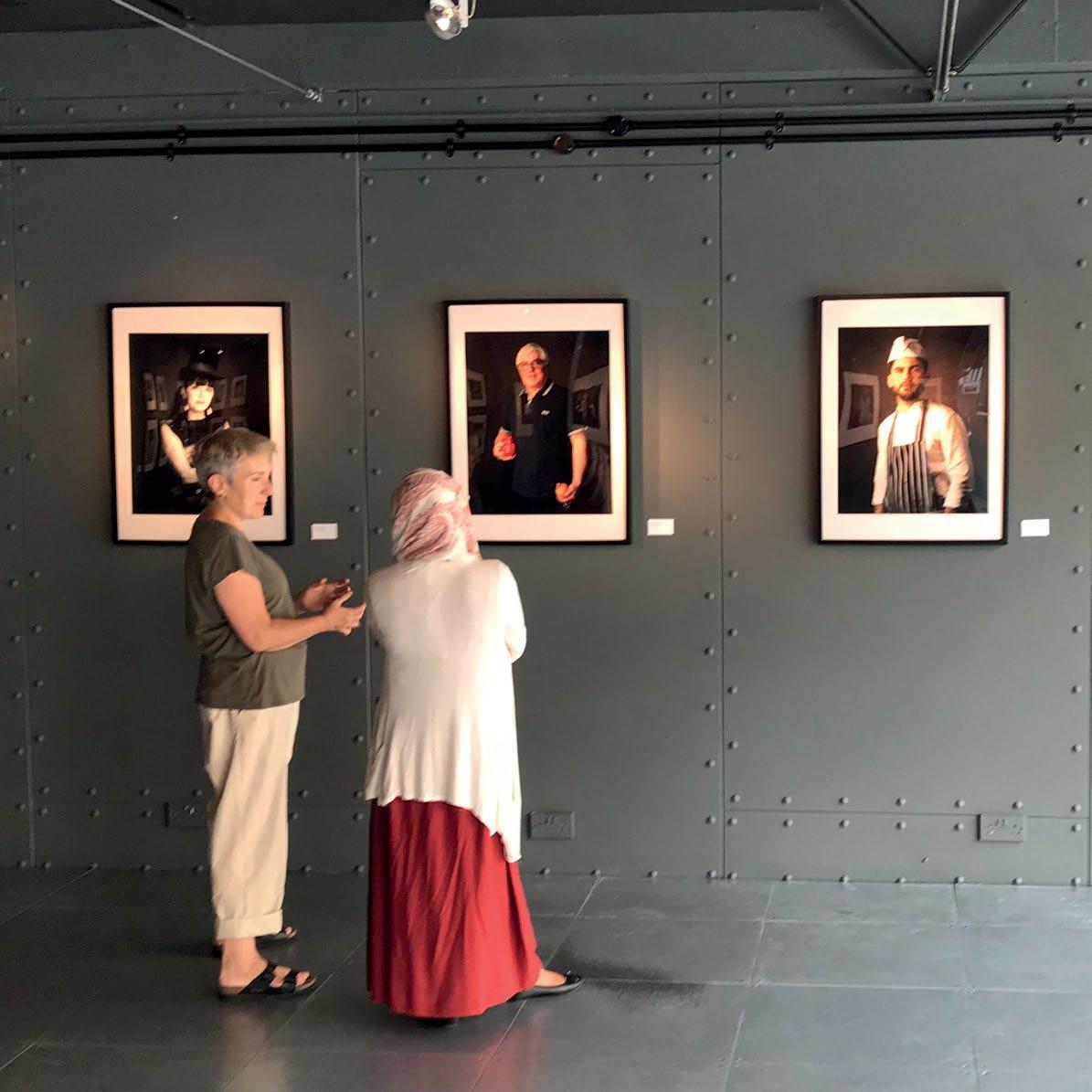
CASE STUDY //CREATE CHURCH STREET
The Create Church Street Phase 1 project encouraged arts and culture in the Church Street ward to involve residents in a large-scale regeneration scheme. The project awarded small grants, totalling £200,000, to organisations and individuals to deliver creative activities to benefit local people of all ages and backgrounds. The project encouraged residents to develop a sense of ownership and pride in the area, bringing people from all backgrounds together as Church Street embarks on a process of great change.
Create Church Street funded 29 projects and helped to foster productive relationships between artists, arts organisation and local groups, gave young people a voice, showcased local artists, and introduced residents to new creative opportunities.
Working closely with local gallery The Showroom increased the schemes applications by 19%, demonstrating the value of local partnerships. More generally, the project showed how culture can be used successfully to celebrate local communities, helping them to feel involved and engaged in matters that affect them, while developing trust between the council and communities.
Phase 2 Create Church Street launched on 2 September 2020 with a £150,000 fund designed to support creative crowd-funding campaigns for beneficial community projects in the Church Street area.

CASE STUDY // WEST END LIVE
Since 2004, Westminster City Council has hosted West End LIVE in Trafalgar Square. In partnership with the Society of London Theatre, the event showcases free performances from the most popular musicals in the West End. The annual weekend-long programme promotes the West End as a world-class destination for culture and theatre as well as promoting Westminster’s cultural offer to an international audience.
The event attracts huge audiences, with Trafalgar Square quickly reaching its maximum capacity and allowing almost 120,000 people to enjoy the performances over the weekend. In 2019, over 30 different theatre productions were showcased.
The event drives footfall into the West End, subsequently providing a boost in ticket sales for participating shows. Almost 70% of visitors to West End LIVE said they would not have come to this part of London if it were not for West End LIVE: their presence generates a net gain of £4.5m to the local economy.
West End LIVE is one of Westminster’s true highlights, loved by audiences, theatres, and local businesses alike. A virtual version was experienced by over 200,000 online visitors in 2020, but we hope it will be back live, bigger and better than ever in 2021.
DRIVING OUR PRIORITIES FORWARD 2021–2025
Priorities Actions
Culture for All
Connect more residents and visitors with the local cultural offer.
Engage and empower young people to participate in local culture, building on existing programmes such as the Music Hub.
Use digital technology to engage more residents in culture, including those who are isolated.
Encourage use of library, archives and partner resources to explore and share stories about BAME communities.
Collaborate with cultural partners and resident groups to co-create more free and accessible community events.
Improve hard-to-reach resident engagement in the local cultural offer.
Better council signposting via social media, resident newsletters, City Save upgrade, City Lions digital platform and targeted promotional campaigns.
Engagement with schools, parents, family hubs, youth hubs and libraries to create more platforms for young people to express their creativity and shape their local culture.
Work with partners to extend reach of digital cultural experiences through the council's online communication channels.
More public engagement with BAME arts organisations and practitioners in community spaces.
Work with partners to offer our residents free and accessible festivals and events including West End Live.
More outreach arts activities in housing estates, faith venues and schools, and collaboration with community champions.
Improve access for those experiencing disabilities. Accommodating the needs of those with disabilities by ensuring, for instance, parking spaces and dementia adjustments.
Priorities
Resilient Communities
Bring cultural productions into library spaces and platforms to increase access.
Actions
New Performing Arts Library with new accessible rehearsal rooms and events spaces to host cultural activities.
Dedicate more council resources to culture and wellbeing activities for those who are isolated or living with poor health.
Libraries and Social Care to expand wellbeing offer through pilot programmes and evaluated interventions.
Help to enable more local connections between primary care and arts provision.
Libraries to collaborate with Public Health to identify promotion, referral and evaluation mechanisms.
Support active participation in culture to improve mental and physical health.
Delivery of Dance Westminster annual event and work with voluntary sector to create more participatory opportunities with health benefits.
DRIVING OUR PRIORITIES FORWARD 2021–2025
Priorities Actions
Open for Business
Work with the creative sector and BIDs to enable economic recovery.
Creating new opportunities for creative and cultural sectors to enhance the visitor offer, enliven high streets and attract business investment.
Priorities Actions
Creative Placemaking
Promote our neighbourhoods, business districts and heritage settings as cultural hubs with an experience-based offer.
Collaboration with BIDs and neighbourhood forums to animate the public realm, showcase unique local heritage and cultural character.
Create a strong operating environment for creative and cultural sector to retain international competitiveness.
Development of council policies on licensing, public realm and street entertainment to support growth and attract visitors.
Enable creative enterprise through supporting affordable workspaces.
Growth of Enterprise Space Network and launch of further new workspaces.
Develop our public realm programmes such as our Green Plaque scheme and City of Sculpture.
Work with newly appointed independent panels to increase the relevance and impact of public realm programmes.
Deliver the City Plan 2019–2040’s aspiration to improve the public realm and protect arts, heritage, cultural and community facilities.
Address skills gaps and improve pathways into creative careers for young people.
Co-design opportunities for local young people to feature in council-run programmes such as Enterprise Week, Creative Industries Week and City Lions.
Ensure culture is included at the heart of any changes to the public realm and all regeneration schemes.
Improve wayfinding, make the city more walkable and cyclable, and encourage neighbourhood plans that protect cultural venues. Update planning and policy guidance to support public art works in appropriate locations that reflect our diverse communities.
Deliver Strand-Aldwych Creative Learning Quarter, Oxford Street Cultural Strategy, creative districts of Harrow Road and Ebury Bridge and Create Church Street Phase 2.
Culture is at heart of new smart city developments. Seek to promote local cultural offer and creative interactions in technology solutions developed across the city.
RELATED COUNCIL
STRATEGIES REPORTS
/ City for All
/ Health & Wellbeing Strategy
/ ActiveWestminster
/ West End Partnership Vision
/ Street Entertainment Policy
/ Licensing Policy
/ Markets Strategy
/ Greener City Action Plan 2015–2025
/ A Partnership Approach to Open Spaces and Biodiversity in Westminster
/ City Plan 2019–2040*
/ Climate Emergency Action Plan*
/ Events & Filming Strategy*
/ Dementia Plan*
/ Youth Strategy*
/ Animation Strategy*
* In development at time of publishing
/ Community Cohesion Report
/ Armed Forces Covenant
/ Libraries Advisory Board Report
/ Health and Wellbeing Centres Task Group Report
/ Access to Culture Task Group Report
KEY PUBLICATIONS AND SOURCES CONSULTED
/ Changing Lives: the social impact of participation in culture and sport, DCMS, 2019 publications.parliament.uk/pa/cm201719/ cmselect/cmcumeds/734/73402.htm (1)
/ The value of arts and culture to people and society, Arts Council England 2014, artscouncil.org.uk/ sites/default/files/infographics/Evidence_ review_Infographic_March_2014.jpg (2)
/ Social Prescribing, GLA 2017, london.gov.uk/ what-we-do/health/social-prescribing (3 & 5)
/ Creative health: the arts for health and wellbeing, All-Party Parliamentary Group on Arts, Health and Wellbeing 2017, artshealthandwellbeing.org.uk/ appg-inquiry/Publications/Creative_Health_ Inquiry_Report_2017_-_Second_Edition.pdf (4 & 6)
/ The Loneliness Experiment: A National Survey led by University of Manchester and BBC
/ seed.manchester.ac.uk/education/ research/bbc-loneliness-experiment (7)
/ UK Business Register and Employment Survey: 2017 Results, Office for National Statistics (8)
/ Creative Industries Statistics, Creative Industries Federation, 2020 creativeindustriesfederation.com/statistics (9)
/ The case for cultural learning, Cultural Learning Alliance 2017, culturallearningalliance. org.uk/wp-content/uploads/2017/08/ CLA-key-findings-2017.pdf (10)
/ London Plan, GLA, 2016, london.gov.uk/what-wedo/planning/london-plan/current-london-plan
/ Visitor Attraction Trends in England 2017, Visit England, visitbritain.org/sites/ default/files/vb-corporate/DocumentsLibrary/documents/England-documents/ vva_2017_trends_in_england.pdf
/ Contribution of the arts and culture industry to the national economy, Arts Council England 2015, artscouncil.org.uk/sites/default/files/ download-file/Arts_culture_contribution_ to_economy_report_July_2015.pdf
/ Cultural Tourism Vision for London, GLA 2015, london.gov.uk/sites/default/files/cultural_ tourism_vision_for_london_low_res_version.pdf
/ Creative Coalition A Plan to Reimagine, Creative Industries Federation, 2020, creativeindustriesfederation.com/publications/ creative-coalition-plan-reimagine
/ Taking part survey, DCMS, gov.uk/guidance/taking-part-survey
/ 10 skills for the rise of automation, World Economic Forum 2018, weforum.org/ agenda/2018/07/the-skills-needed-to-survivethe-robot-invasion-of-the-workplace
/ 2018 Snapshot, Visit Britain, visitbritain.org/2018-snapshot
/ Culture for All Londoners: Mayor of London’s Culture Strategy, 2018, london.gov.uk/sites/ default/files/2018_culture_strategy_final_0.pdf
/ Cultural Infrastructure Plan: A Call to Action, GLA 2019, london.gov.uk/sites/default/files/ cultural_infrastructure_plan_online.pdf
/ Understanding the value of arts and culture, AHRC 2016, ahrc.ukri.org/documents/publications/ cultural-value-project-final-report
/ Global Trade Report, Creative Industries Federation 2018, creativeindustriesfederation.com/ sites/default/files/2018-01/Federation%20 Global%20Trade%20Report_0.pdf
/ Let’s Create 2020-30, Arts Council England, artscouncil.org.uk/letscreate
/ Sectors Economic Estimates GVA, DCMS 2016, gov.uk/government/statistics/dcms-sectorseconomic-estimates-2016-regional-gva
/ Heritage and Society, Historic England, 2019, historicengland.org.uk/content/heritagecounts/pub/2019/heritage-and-society-2019
/ Heritage and Economy, Historic England, 2019, historicengland.org.uk/content/heritage-counts/ pub/2019/heritage-and-the-economy-2019
westminster.gov.uk/cultural-strategy
